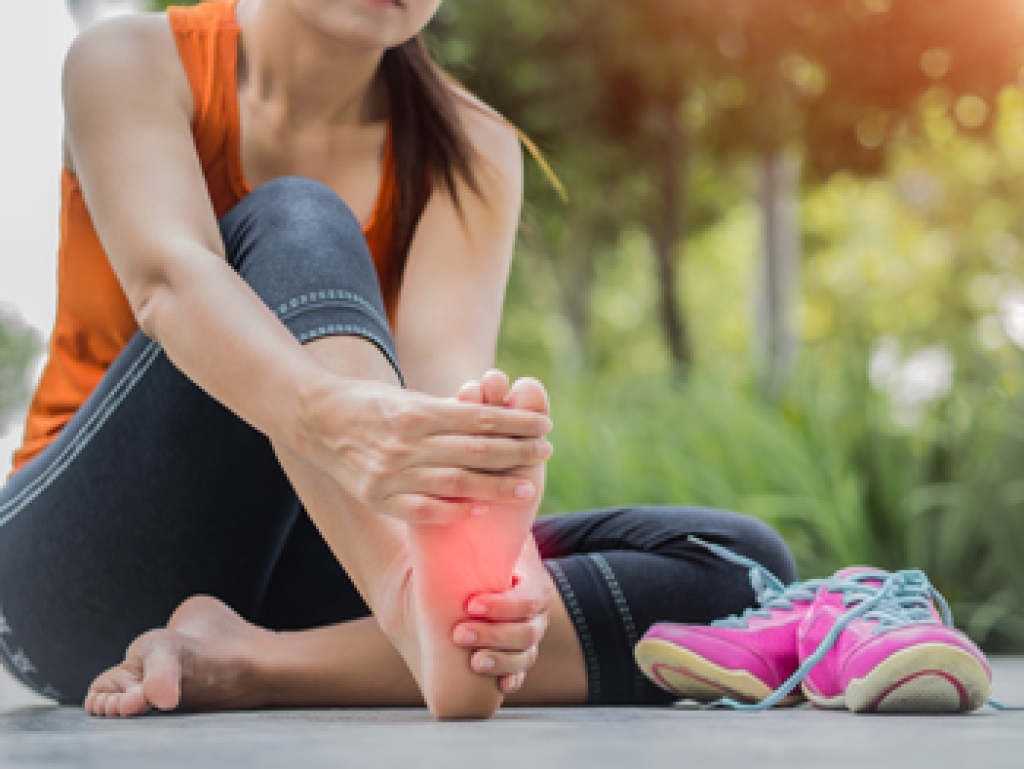
Athlete’s foot is a common fungal infection that affects the skin of the feet and thrives in warm moist environments. One type of athlete's foot is interdigital athlete’s foot, which develops between the toes causing redness, itching, peeling skin and burning discomfort. Moccasin-type athlete’s foot involves the soles and sides of the feet leading to dry thickened cracked skin that can spread slowly. Vesicular athlete’s foot has fluid-filled blisters often accompanied by intense itching and inflammation. Additionally, ulcerative athlete’s foot is the most severe form and may cause open sores, swelling, pain and secondary bacterial infection. A podiatrist can properly diagnose the specific type and provide targeted treatment. Included are prescription antifungal medication, skin care guidance, and preventive strategies. If you have symptoms of athlete’s foot, it is suggested that you consult a podiatrist who can make a proper diagnosis and provide treatment.
Athlete’s Foot
Athlete’s foot is often an uncomfortable condition to experience. Thankfully, podiatrists specialize in treating athlete’s foot and offer the best treatment options. If you have any questions about athlete’s foot, consult with Braden Jenkins, DPM from The Ridge Foot & Ankle Center. Our doctor will assess your condition and provide you with quality treatment.
What Is Athlete’s Foot?
Tinea pedis, more commonly known as athlete’s foot, is a non-serious and common fungal infection of the foot. Athlete’s foot is contagious and can be contracted by touching someone who has it or infected surfaces. The most common places contaminated by it are public showers, locker rooms, and swimming pools. Once contracted, it grows on feet that are left inside moist, dark, and warm shoes and socks.
Prevention
The most effective ways to prevent athlete’s foot include:
- Thoroughly washing and drying feet
- Avoid going barefoot in locker rooms and public showers
- Using shower shoes in public showers
- Wearing socks that allow the feet to breathe
- Changing socks and shoes frequently if you sweat a lot
Symptoms
Athlete’s foot initially occurs as a rash between the toes. However, if left undiagnosed, it can spread to the sides and bottom of the feet, toenails, and if touched by hand, the hands themselves. Symptoms include:
- Redness
- Burning
- Itching
- Scaly and peeling skin
Diagnosis and Treatment
Diagnosis is quick and easy. Skin samples will be taken and either viewed under a microscope or sent to a lab for testing. Sometimes, a podiatrist can diagnose it based on simply looking at it. Once confirmed, treatment options include oral and topical antifungal medications.
If you have any questions, please feel free to contact our office located in Idaho Falls, ID . We offer the newest diagnostic and treatment technologies for all your foot care needs.




